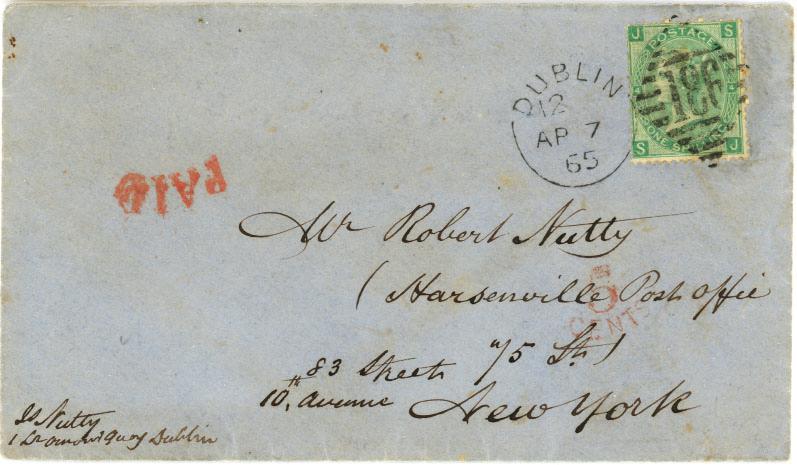
12 minute read
To the Five Boroughs Part 1 - Manhattan by Matthew Healey
To The Five Boroughs Part I: Manhatt an
Matthew Healey
Advertisement
The majority of lett er mail from Great Britain to North America in the 19th century was destined for New York City, the center of commerce. The vast majority of mail to New York either went to some street in lower Manhatt an or was simply left unaddressed, as the U.S. Post Offi ce’s trusty carriers would have been expected to know where to fi nd businesses and well-to-do households – or the recipient would have been expected to call for his or her mail.
Besides lower Manhatt an, lett ers to downtown Brooklyn are not uncommon, but beyond that, 19th-century mail to other parts of what would become, by 1898, the fi ve boroughs of the second-largest city in the world – including the Bronx, Queens, Staten Island and anyplace in Manhatt an north of 23rd Street – is rare.
I was therefore delighted to acquire the cover shown in Figure 1, posted in Dublin on April 7, 1865, franked with a 1-shilling green Queen Victoria (watermarked Heraldic Emblems) and addressed to a Mr. Robert Nutt y, care of the “Harsenville Post Offi ce” at 75th Street in New York. For good measure, a second location, 83rd Street and 10th Avenue, is also given, perhaps as the place where Mr. Nutt y could be found living or working. Unusually for personal mail of that era, there is a return address at lower left, which I’ll discuss later.
Being a New Yorker of Irish and British descent, I fi nd mail from the Emerald Isle to the Big Apple appealing for personal reasons, particularly when it looks like it might have a story to tell about the bygone city. This cover was a research project calling my name.
Figure 1. An 1865 cover addressed to Robert Nutt y, care of the Harsenville post offi ce on what would become New York’s Upper West Side.
290 September-October 2022 www.collectorsclub.org
If you’ve never heard of Harsenville, don’t fret; neither had I. There is no place called Harsenville in New York today, nor any post offi ce by that name on what is now the Upper West Side.
Long ago, of course, there was a Harsenville, named for the Harsen family, descendants of Dutch sett lers who owned a farm in the area during the 18th century (apparently the soil was good for tobacco). Harsenville is counted among the “lost villages” of the Upper West Side that were swept away, along with Bloomingdale, Carmansville, Seneca Village and others, by the urban encroachment of Manhatt an’s famous street grid. Although that grid was offi cially adopted in 1811, the full development of “uptown” didn’t take place until the 1890s. At the time of Nutt y’s lett er, this part of Manhatt an Island was still small farms and fading estates, dott ed with the occasional homesteads, churches and collections of shacks, which coalesced here and there into villages.
The New York Public Library, New-York Historical Society and others provide plenty of historical maps, paintings, engravings and vintage photographs online. Perusing these, it is evident that while many blocks and buildings in lower Manhatt an are preserved today largely as they appeared 150 or even 200 years ago, uptown in 1865 looked nothing like today.
Here were fi elds and trees. The 1851 Dripps map, which shows houses and roads, depicts a sparsely populated area. A decade and a half later, not much had changed; most of the streets still weren’t much more than a line of survey markings. The 1865 Viele map pictured in Figure 2 shows a landscape topography of hills and brooks, with just a ghostly overlay of the future grid. This includes 9th, 10th and 11th Avenues, later to be renamed Columbus, Amsterdam and West End Avenues, respectively, in an eff ort to paint the neighborhood as more respectable than the derisively nicknamed Hell’s Kitchen to the south.
Broadway, whose bowtie-shaped intersection with Amsterdam at 72nd lies right in the heart of old Harsenville, was still colloquially the Bloomingdale Road, a meandering country lane that had served as the post road to Albany and Boston since colonial days.
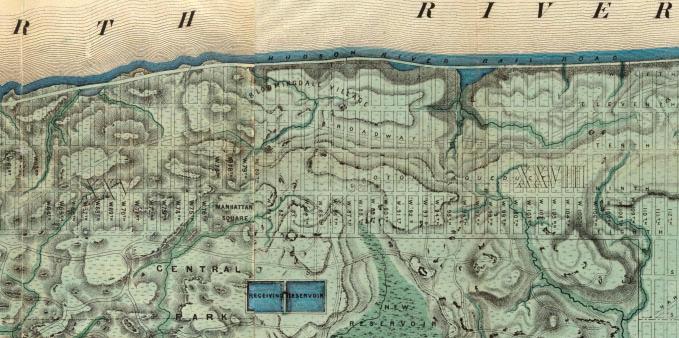
Figure 2. Detail of an 1865 map of New York by Egbert Viele, on which Manhatt an’s original topography is overlaid with the future street grid.
Collectors Club Philatelist Volume 101, Number 5 291
In 1861, the historian Benson John Lossing described the road as “a hard, smooth, macadamized highway, broad, devious, and undulating, shaded the greater portion of its length, made att ractive by many elegant residences and ornamental grounds, and thronged every fi ne day with fast horses and light vehicles, bearing the young and the gay of both sexes.”
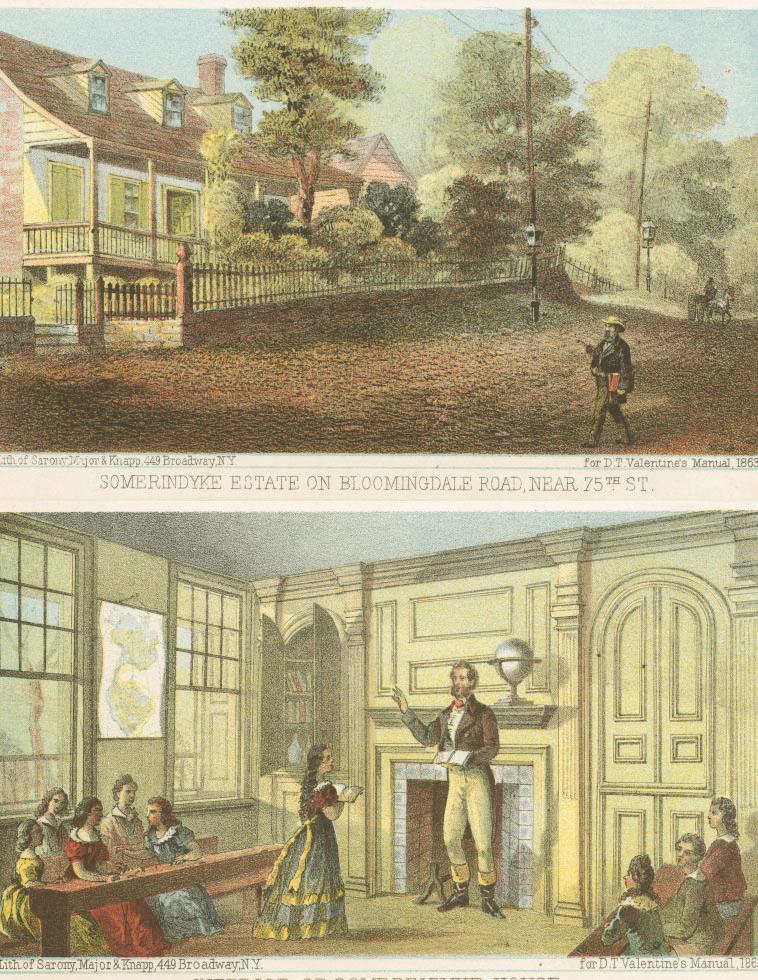
Figure 3. The Somerindyke House was a landmark homestead along the Bloomingdale Road around 75th Street. It is claimed that Louis Philippe of France was once a guest there.
292 September-October 2022 www.collectorsclub.org
At the road’s intersection with 75th Street stood a house of some renown: the Somerindyke estate, shown in Figure 3. A sprawling aff air in the style of traditional Dutch colonial farmhouses that can still be seen up and down the Hudson Valley, it is said to have hosted none other than Prince Louis Philippe, future King of the French, during his exile in the United States. Valentine’s Manual, a compendium of New York City history published annually during the 19th and early 20th centuries, ran an illustration of Louis Philippe teaching a group of schoolchildren in the living room of this house, although its hard to be certain whether the scene was real or apocryphal.
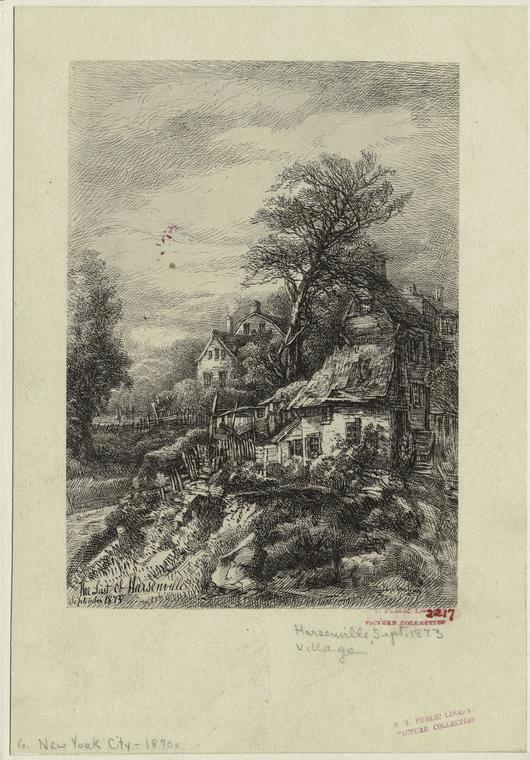
Figure 4. The lost villages of the Upper West Side are steeped in romance, exemplifi ed by this almost Gothic drawing of an abandoned-looking homestead titled The Last of Harsenville.
Collectors Club Philatelist Volume 101, Number 5 293
Did Robert Nutt y stay at this house, or someplace very close by? Short of uncovering a family history, we have no real way of knowing. The house was clearly a popular subject for artists, for a quick internet search turns up numerous drawings. Some convey its fading grandeur, while others seem to show it as abandoned and crumbling. The N.Y. Public Library holds a drawing dated to 1873 titled The Last of Harsenville. Shown in Figure 4, it depicts a wild, darkly romantic place, far removed from the bustling city that would presently replace it.
Modern developments were beginning to roll up the road in the form of telegraph wires, street lights and paving. In 1868, three years after the arrival of the Nutt y cover, the Somerindyke house was torn down. The following year Broadway was widened, through the eminent-domain seizure of adjacent land from farms such as the Harsens’, and dubbed “the Boulevard.”
The Harsenville post offi ce happens to have been one of New York’s shortestlived: records show it was established in 1861 and discontinued just two years later, having been served by a single postmaster, Philip Bonstell (or Bonesteel), whose compensation exceeded total receipts in each of the years he served. Nutt y’s lett er missed his term of offi ce altogether.
There was—and still is—a post offi ce on 83rd Street close to what used to be 10th Avenue, and it is possible that the secondary address on the cover refers to this, rather than Nutt y’s abode. Later known as Station W, its former location on the south side of the block between Columbus and Amsterdam is still marked by the inscription over the entrance to a Crunch gym, shown in Figure 6. The post offi ce was relocated in 1937 to the north side of the block a few yards to the east and christened “Planetarium Station,” presumably a nod to the astronomy hall that opened at the nearby American Museum of Natural History two years before.

Figure 5. Farm life on the Upper West Side lingered through the 1870s. The Brennan Farmhouse shown is reputed to have hosted Edgar Allan Poe.
294 September-October 2022 www.collectorsclub.org
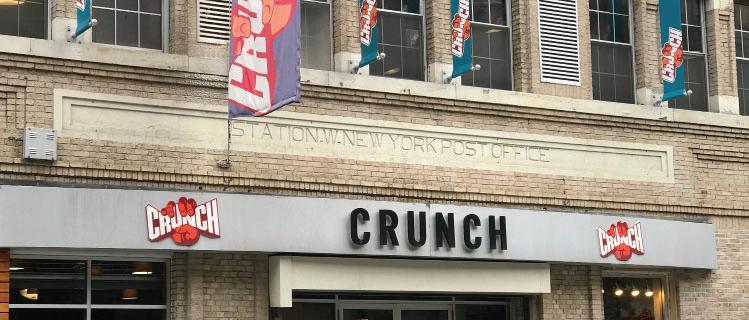
Figure 6. The Station W post offi ce, on 83rd Street just east of 10th Avenue, occupied this building until 1937, when it moved across the street.
Figure 7. The gentleman in this photograph, also named Robert Nutt y, was born in Dublin in 1865, the year the cover was mailed. Was he related, and if so, how?
It would take some time for all of the old farmhouses of the Upper West Side to disappear completely. Figure 5 shows an 1879 photograph of one of the last, the Brennan farmhouse at 84th and Broadway, perched high on a rock. Edgar Allan Poe is said to have stayed there once. At the left of the frame can just be made out one of those new-fangled telegraph poles.
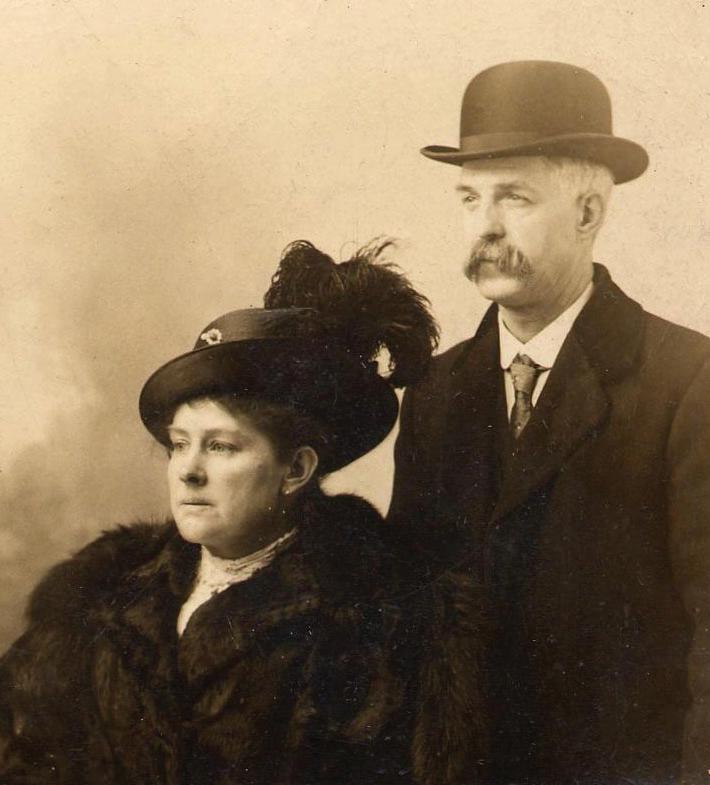
Collectors Club Philatelist Volume 101, Number 5 295
As for the addressee himself, I spent quite a while searching Ancestry.com and other sites, where I exhumed a couple of candidates who had been born in Dublin and wound up in New York City. Our man could have been the Robert Nutt y who slipped in via Canada, undocumented, as was often the case, took up abode on 86th Street with a wife and two daughters and is buried with them in Trinity Church cemetery on Riverside Drive; it’s possible he’s the same Robert Nutt y listed in an 1872 city directory as a contractor living on 48th Street. He might have been the uncle of the handsome namesake shown in Figure 7, born in Dublin the year the lett er was sent, featured in a family-history blog at thenutt ychronicles.com. There were many Irish immigrants to New York at this time, enjoying a variety of circumstances from hardscrabble to wealthy, and it would be hard to pinpoint the man without spending an eternity on genealogical research. Suffi ce to say, he wasn’t the King of France.
April 1865, meanwhile, was an eventful month. Gen. Lee surrendered at Appomatt ox on the 9th and the “Awful Event” at Ford’s Theater happened on the 14th; the following morning Lincoln was “with the angels” or “with the ages,” depending on whose recollection of Edwin Stanton’s bedside utt erances you prefer.
As to how the Nutt y lett er reached New York, Hubbard and Winter's North Atlantic Mail Sailings 1840-75, suggest it was carried on the Cunard ship Persia, which left Queenstown (Cove) on the 9th and arrived in New York on the 19th. The cover was marked as fully prepaid, with 5¢ (2½d out of the shilling) credited to the United States for delivery uptown. Within three years, the transatlantic postage would drop to sixpence and, in 1870, it would be halved again, to 3d. In those days, the norm was for postage rates to go down, not up – such were the dividends of industrial progress.
If the place where the lett er’s journey ended was so very diff erent then than now, the opposite is true of its place of origin. As mentioned before, there is a return address at lower left. Perhaps it was a tacit admission that the sender was not entirely sure of his correspondent’s address. The writing is small and spidery, but it’s possible to make out the name Is (short for Isaac? Isaiah? Isidore? Isambard? or perhaps James?) Nutt y, 1 Lr. Ormond Quay, Dublin. Was this Robert’s brother – father – nephew?
Ormond Quay Lower, as it is called today, begins where Capel Street meets the River Liff ey, on the north side, just steps across the bridge from Dublin’s City Hall. Remarkably, this scene has hardly changed in 225 years. The building that stands on the corner today, numbered 1 on both the street and the riverfront, is the same elegant, Georgian edifi ce we see on the left in James Malton’s 1797 aquatint shown in Figure 8. Fancy townsfolk mingle with beggars; a pair of Redcoats ride by on horseback, followed by a bugler. On the wall of the Capel Street facade is a sign for The Old State Lott ery Offi ce. The children in the picture, had they lived long enough, could have been acquainted with Mr. I. Nutt y as he sat writing lett ers there, seven decades later. Had they time-traveled to 2022, they would recognize this spot without diffi culty.
As it turns out, this cover tells not one story but several: how its point of origin and destination took their opposing trajectories, the exurban wilderness of Harsenville vanishing under the bright lights and bustle of Broadway, while the grand thoroughfares of Joyce’s “dear dirty Dublin” fell upon hard times, the
296 September-October 2022 www.collectorsclub.org
houses on the quay neglected yet preserved, their fortunes once again looking up with the arrival of a new century.
In both a literal and a metaphysical sense, this lett er passed from the old world to the new. In the 10 days it took to cross the ocean, America was transformed: the Civil War came to an end, Lincoln was assassinated and everything changed. Nutt y may have been an ordinary fellow, but the tales his mail can tell are extraordinary.
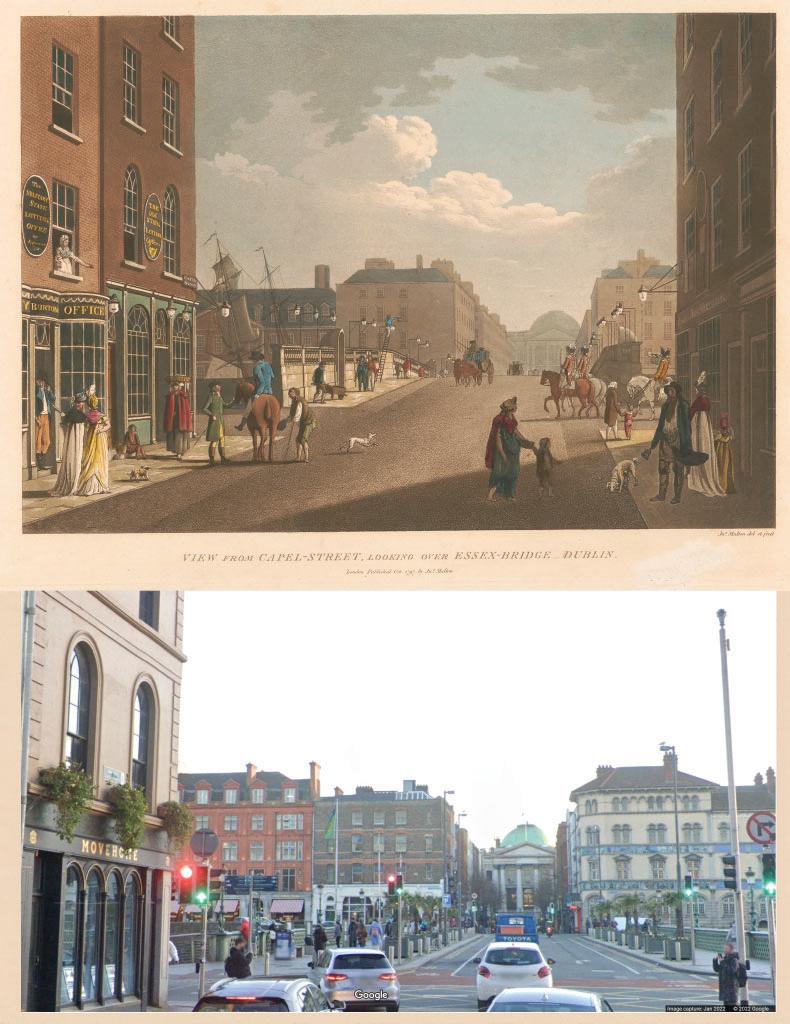
Figure 8. By contrast, Ormond Quay Lower, in central Dublin, has scarcely changed in 225 years, as these views from 1797 and 2022 att est. Aquatint by James Malton and photograph by Google.
Collectors Club Philatelist Volume 101, Number 5 297
CORINPHILA – YOUR CO WILL BE IN THE BEST CO M



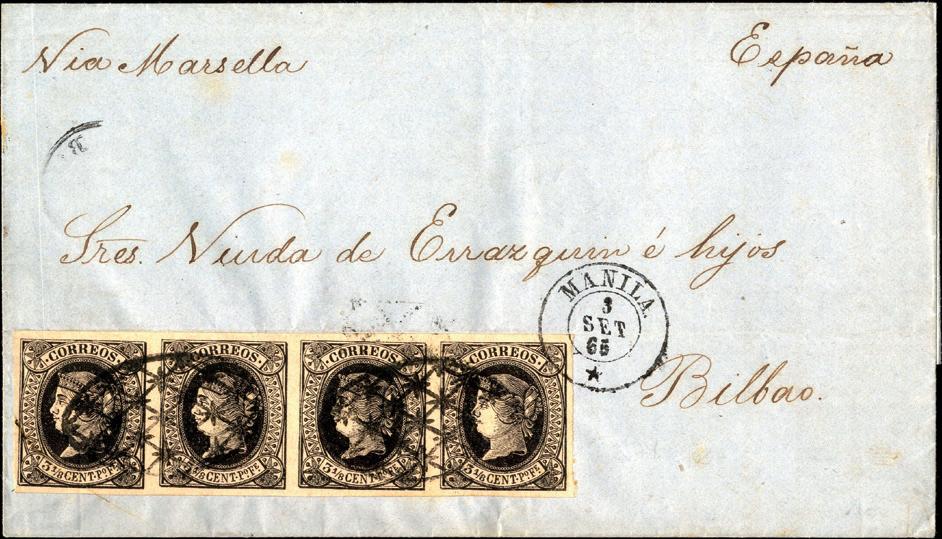

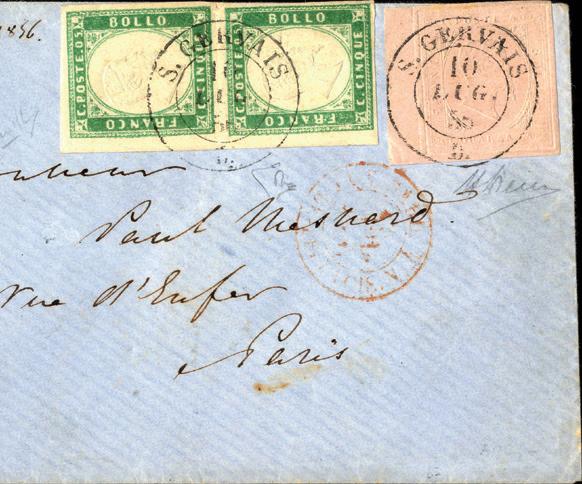

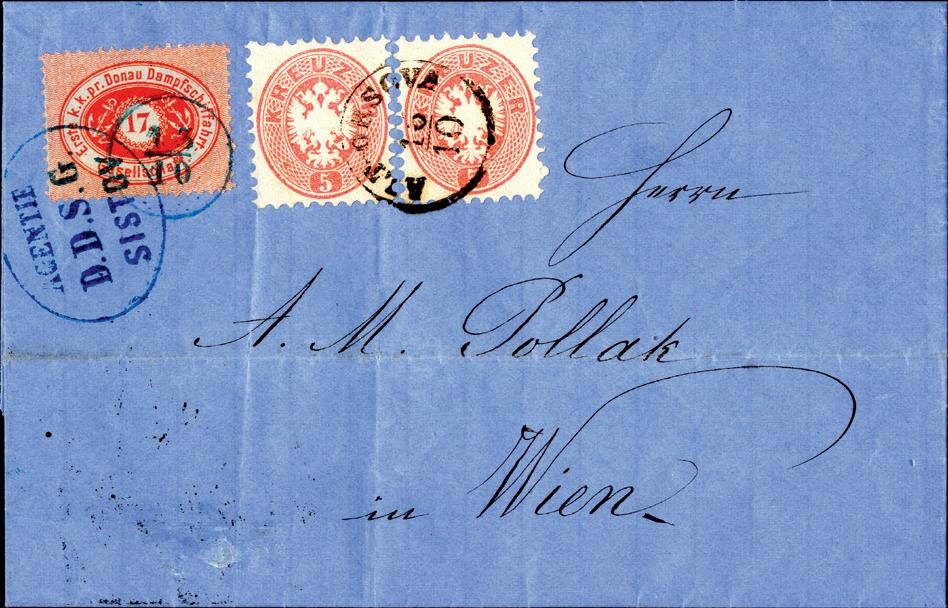

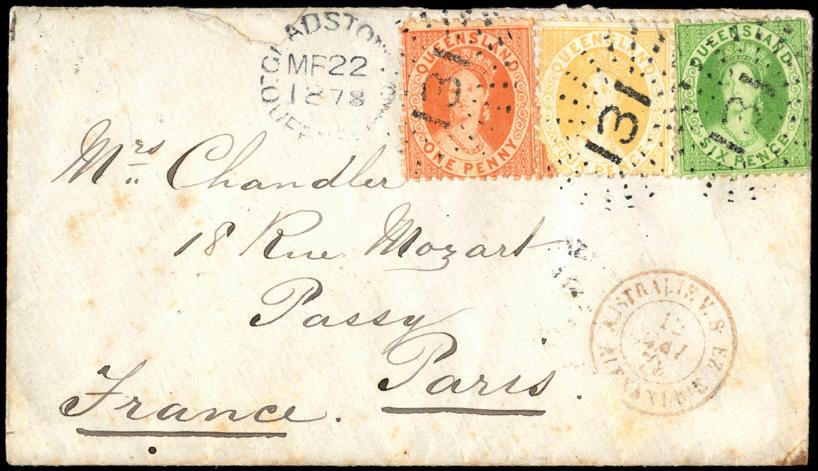

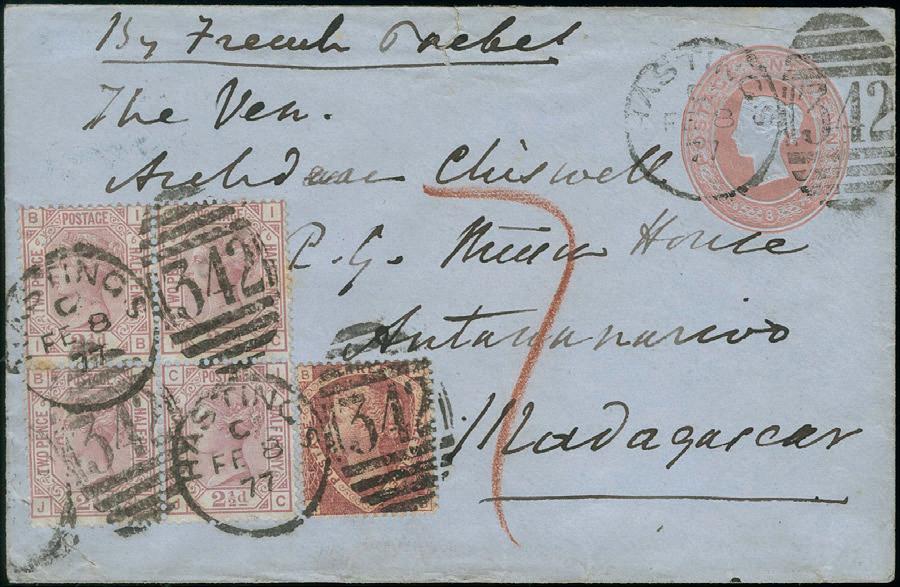
CORINPHILA AUCTIONS – A TRADITION OF SUCCESS
As the oldest stamp auction house in Switzerland, situated in the international fi nancial centre of Zürich, we at Corinphila Auctions really know the market.
The most specialised philatelic knowledge, fastidious presentation and an international customer base with strong purchasing power guarantee the highest prices.
298 September-October 2022 www.collectorsclub.org










